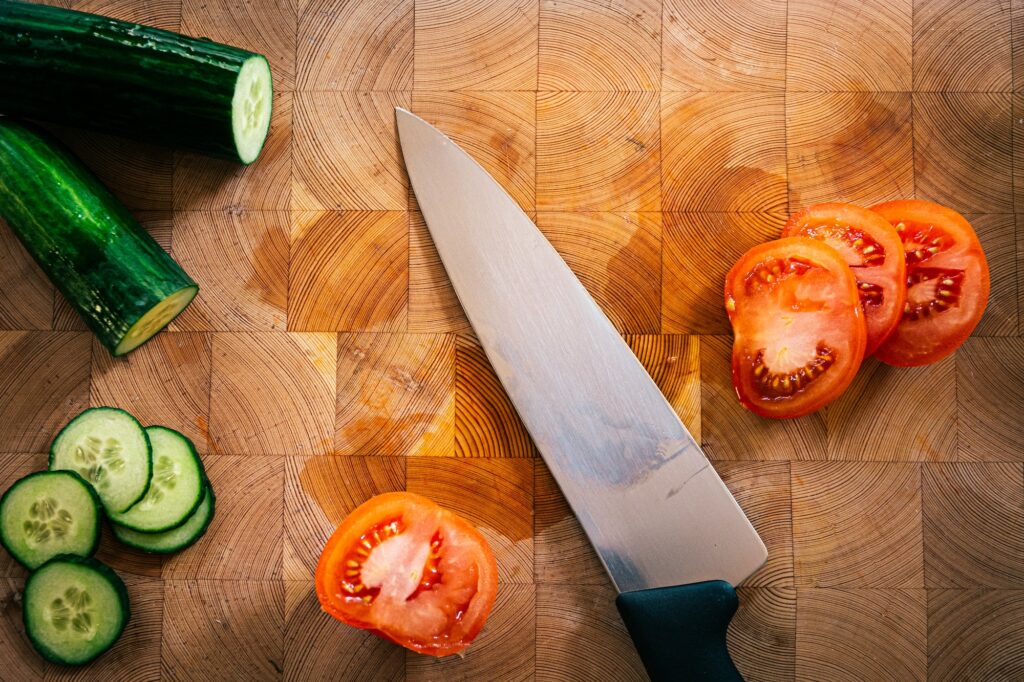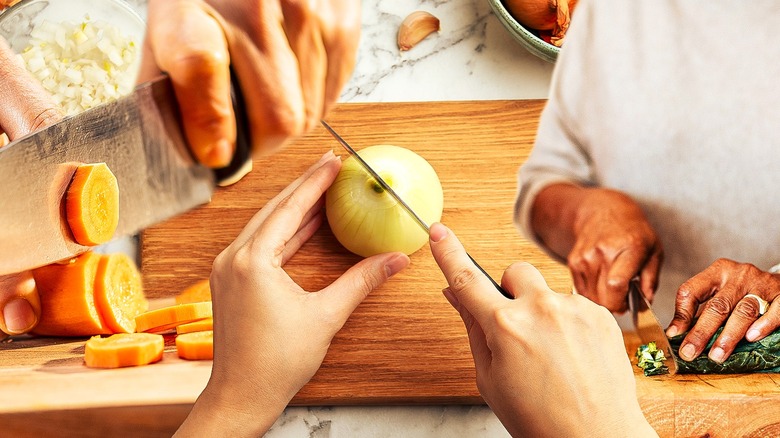What Is the Color of the Produce-Dedicated Cutting Board? Exclusive Insights You Need
Written By James Morgan
The art of barbecue involves not just mastering the grill but also understanding the nuances of food preparation. As a barbecue enthusiast, you know that safe food handling is paramount. One question that often arises is: what is the color of the produce-dedicated cutting board?
In the world of cutting boards, color coding is crucial for maintaining hygiene. Let's dive into this fascinating yet essential topic and uncover the secrets of safe grilling.

Understanding Color-Coded Cutting Boards
Color-coded cutting boards are used to prevent cross-contamination in kitchens. This practice is especially vital when preparing multiple food types. For barbecue enthusiasts, understanding this system can be a game-changer.
The Significance of a Produce-Dedicated Cutting Board
Each color-coded cutting board serves a specific purpose:
- Red: Raw meat
- Blue: Raw fish
- Yellow: Poultry
- Green: Fruits and vegetables
- White: Bread and dairy products
- Brown: Cooked meat
So, what is the color of the produce-dedicated cutting board? As you may have guessed, it's green! Green represents fresh produce, ensuring the board used for fruits and vegetables remains uncontaminated by raw meats, poultry, or fish.

The Importance of a Green Cutting Board in Barbecue
For barbecue lovers, using a green cutting board for produce is not only a best practice but also a critical safety measure. Heres why:
Safe Food Handling Prevents Cross-Contamination
Cross-contamination is a serious concern, especially when handling raw meat and fresh produce. Using a green cutting board exclusively for fruits and vegetables minimizes this risk, ensuring safer and tastier meals.
Enhancing the Flavor of Fresh Ingredients
When you're grilling, the freshness of your ingredients plays a significant role in the flavor profile. A contaminated cutting board can compromise this, making the green board's role even more critical.

Maintaining Your Produce-Dedicated Cutting Board
Proper maintenance of your green cutting board is essential for longevity and hygiene. Heres how to do it:
Regular Cleaning
Clean your green cutting board thoroughly after each use. Use hot, soapy water and scrub both sides of the board. Rinse well and let it air dry completely.
Sanitizing
Sanitize the board periodically to kill any lingering bacteria. A mixture of one tablespoon of bleach per gallon of water works wonders. Soak the board for several minutes, rinse thoroughly, and dry.
Oiling Wooden Boards
For those using wooden cutting boards, applying mineral oil can prevent drying and cracking. This also helps maintain a smooth surface.
Regular Replacement
Over time, cutting boards can become worn out. Deep grooves can harbor bacteria, so replacing your cutting board when it shows signs of heavy wear is advisable.

Choosing the Right Cutting Board for Barbecue
Selecting the correct cutting board enhances your grilling experience. Here are some factors to consider:
Material
Cutting boards come in various materials, including plastic, wood, and bamboo. Each has its pros and cons:
- Plastic: Easy to clean and sanitize
- Wood: Gentle on knives and naturally antibacterial
- Bamboo: Eco-friendly and durable
Size
Consider the size of your cutting board based on the volume of produce you typically prepare. Larger boards provide more space and are generally more versatile.
Thickness
Thicker boards tend to be more durable and resistant to warping. However, they may be heavier, so find a balance that works for you.
FAQ
Why are color-coded cutting boards important?
Color-coded cutting boards help prevent cross-contamination, ensuring that raw meats do not come into contact with fresh produce.
Can I use my green cutting board for other food items?
While technically possible, it's best to reserve your green cutting board for fruits and vegetables to maintain strict hygiene practices.
How often should I replace my cutting board?
Replace your cutting board when it shows significant signs of wear, such as deep grooves. This helps prevent bacterial buildup.
As an Amazon Associate, I earn from qualifying purchases.



